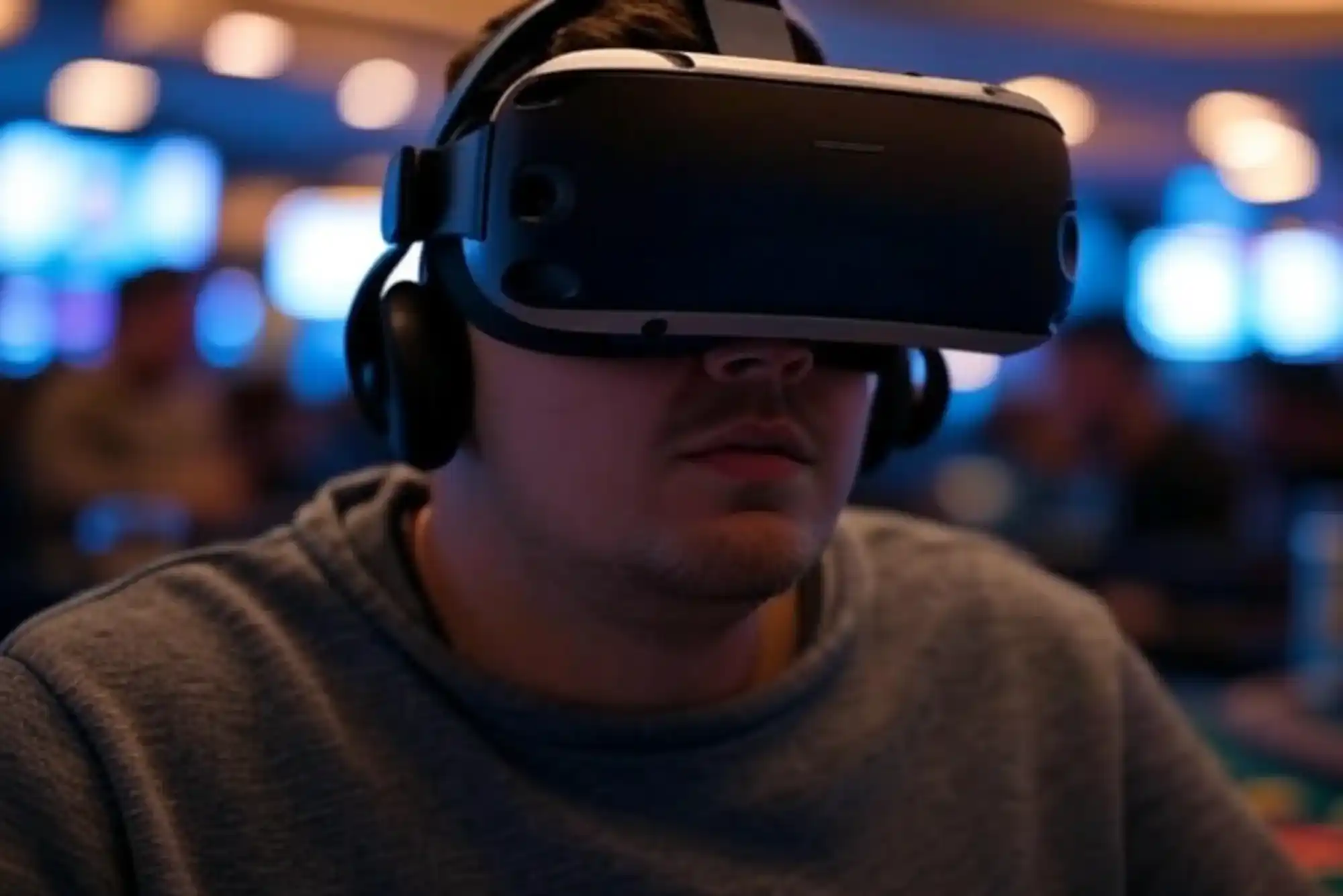The online gambling world is no stranger to innovation. Over the past two decades, we’ve seen a steady shift from traditional land-based casinos to vibrant digital platforms offering everything from live dealer games to themed slots. But the next leap is already in motion, and it’s more immersive than ever: virtual reality (VR). As someone who has spent years following the evolution of online gambling—from Flash-based poker rooms in the early 2000s to today’s high-end mobile apps—I’m convinced that VR is the next frontier in casino game design.
The question is no longer if VR will become a part of online casinos, but how far it will go—and how it will change the way we experience online gambling. In this article, we’ll take a deep dive into the future of VR in casino game design, the technologies driving it, the opportunities it opens up, and the unique position of non UK license casinos in this rapidly evolving landscape.
The Immersive Appeal of VR
Virtual reality brings something unique to the table: presence. While current online casino games can mimic the sounds, visuals, and even the timing of a real casino, they lack the feeling of actually being there. VR solves this problem by placing players into a fully interactive, 3D environment. Imagine walking through a beautifully designed casino lobby, approaching your favorite slot machine, or sitting down at a poker table next to avatars representing real players from around the world.
The sensation of presence—being “inside” the game—completely alters the experience. It’s not just about watching reels spin anymore; it’s about physically reaching out to pull a lever or looking around the table to read your opponents. Developers are starting to realize that VR isn’t just a flashy upgrade—it’s a platform that can redefine what online gambling feels like.
How Developers Are Designing VR Casino Games
Designing for VR is a different beast compared to 2D interfaces. For starters, game mechanics need to account for depth, movement, and player interaction. This means that UI elements, such as chip stacks or game controls, have to be placed logically within the virtual space—not just slapped on a screen.
Top-tier studios are already experimenting with this. Early VR casino platforms like SlotsMillion and PokerStars VR have laid the groundwork by creating accessible environments where users can interact with surroundings, engage with fellow players via voice chat, and even express themselves with customizable avatars.
Game designers are also focusing on realism. For example, VR blackjack needs to feel like you’re truly seated at a table with a dealer who makes eye contact and reacts to your behavior. Achieving this level of nuance requires cutting-edge graphics, real-time animation, and a strong grasp of human psychology.
The Role of Non UK License Casinos
One of the most interesting developments in the VR casino space is the growing involvement of non UK license casinos. These platforms often operate under regulatory bodies like the Malta Gaming Authority or Curaçao eGaming. While they might not be under the jurisdiction of the UK Gambling Commission, many of them maintain high standards in terms of fairness, security, and innovation.
So why are non UK license casinos significant in the context of VR? Because they often have more flexibility in terms of technological experimentation. The UKGC is known for its strict compliance requirements, which can sometimes slow down the rollout of new features or platforms. Non-UK licensed casinos, on the other hand, have fewer restrictions when it comes to integrating emerging technologies like VR.
This regulatory agility allows these platforms to adopt and test VR solutions more rapidly. Some have already started launching VR-compatible game lobbies or integrating Oculus-ready features. For players looking to explore VR gambling before it becomes mainstream, these non-UK platforms may be the first true access point.
What the Player Experience Will Look Like
If you’ve never tried a VR casino, imagine this: you put on your headset and you’re transported to a luxury Las Vegas-style casino. You walk past fountains and chandeliers, hear the ambient noise of slot machines and distant conversations, and feel the buzz of a real gaming floor. You approach a blackjack table, take a virtual seat, and use your hand controller to gesture, place bets, or even give a friendly wave to a fellow player across the table.
It’s not just a gimmick. These VR environments aim to reproduce everything that makes land-based casinos appealing—minus the travel and dress code. From social interactions to game dynamics, everything is tailored to feel more authentic and engaging.
It’s also likely that we’ll see the development of exclusive VR games—titles that are not just conversions of traditional slots or card games, but entirely new formats that leverage the immersive nature of VR. Think of escape room-style puzzle games with gambling elements, or treasure hunts where you have to navigate a 3D environment to unlock bonuses. The sky’s the limit when creativity meets technology.
Challenges to Widespread VR Adoption
Despite its exciting potential, VR in casino gaming isn’t without hurdles. One of the biggest is hardware accessibility. While the cost of VR headsets has decreased in recent years, devices like Meta Quest or HTC Vive are still considered niche compared to smartphones or laptops.
Another challenge lies in development costs. Creating high-quality, immersive VR games requires more resources than traditional games. Studios need 3D artists, motion designers, and developers fluent in platforms like Unity or Unreal Engine—not to mention the server infrastructure to support multiplayer interaction.
Then there’s the issue of motion sickness, which affects some users during extended VR sessions. Developers will need to prioritize user comfort by optimizing frame rates, minimizing latency, and designing movement mechanics that reduce disorientation.
Yet, these challenges are not insurmountable. The pace of innovation suggests that we’re moving toward more affordable, ergonomic VR solutions. And as broadband speeds improve globally, the technical barriers to running complex VR casino environments will continue to fall.
Regulatory Considerations
The future of VR in casino game design also depends heavily on regulation. Governments and licensing bodies are still grappling with how to treat virtual environments. While some regulators see VR as just another interface for existing games, others are starting to consider whether immersive gambling warrants new categories of oversight.
Non UK license casinos will likely be the testing ground for how regulation adapts to VR. Some jurisdictions are already exploring rules around avatar anonymity, voice chat moderation, and the use of biometric data. These are important discussions, as they directly impact player safety and data protection in virtual environments.
It’s also possible that regulators will require new forms of age verification or location tracking to ensure compliance in VR casinos. These regulatory evolutions will shape how quickly and widely VR can be adopted.
A New Era of Social Gambling
One of the most promising aspects of VR casinos is their potential to revive the social side of gambling. While online poker and live dealer games have brought some level of human interaction back into digital gambling, VR takes this to a whole new level.
Imagine being able to read another player’s body language, laugh together over a lucky hand, or even attend scheduled VR tournaments with thousands of other participants. This could redefine the notion of community within online gambling—especially for those who miss the camaraderie of physical casinos.
This is another area where non UK license casinos are innovating quickly. Several platforms are experimenting with social features like voice lounges, avatar-based parties, and community jackpots. The result is an experience that feels more like a real night out and less like clicking buttons on a screen.
Looking Ahead
So, what’s the timeline? We’re still in the early stages. Most online casinos are treating VR as an experimental add-on rather than a core offering. But as headset adoption increases and younger, tech-savvy generations enter the gambling market, that balance is likely to shift.
Within the next 5 to 10 years, I expect to see VR lobbies become standard among major platforms, especially those run by agile non UK license casinos. We’ll see more hybrid offerings too—where you can switch between 2D and VR modes depending on your device or mood.
The longer-term future? Full-scale, persistent virtual casino worlds where you can buy virtual real estate, interact with NPCs, earn digital rewards, and engage in high-stakes games—all within an interconnected metaverse. It might sound futuristic, but we’re already on the path.
Final Thoughts
The integration of VR into casino game design is more than a novelty—it’s a paradigm shift. For players, it promises a richer, more immersive experience. For developers, it opens new creative doors. And for non UK license casinos, it offers a way to lead the industry into uncharted territory with fewer restrictions.
As someone who has followed this space closely, I believe that those who embrace VR now—whether you’re a player or operator—are positioning themselves at the forefront of what could be the most exciting transformation in gambling since the invention of online casinos.
The casino of the future won’t just be on your screen—it’ll be all around you.










